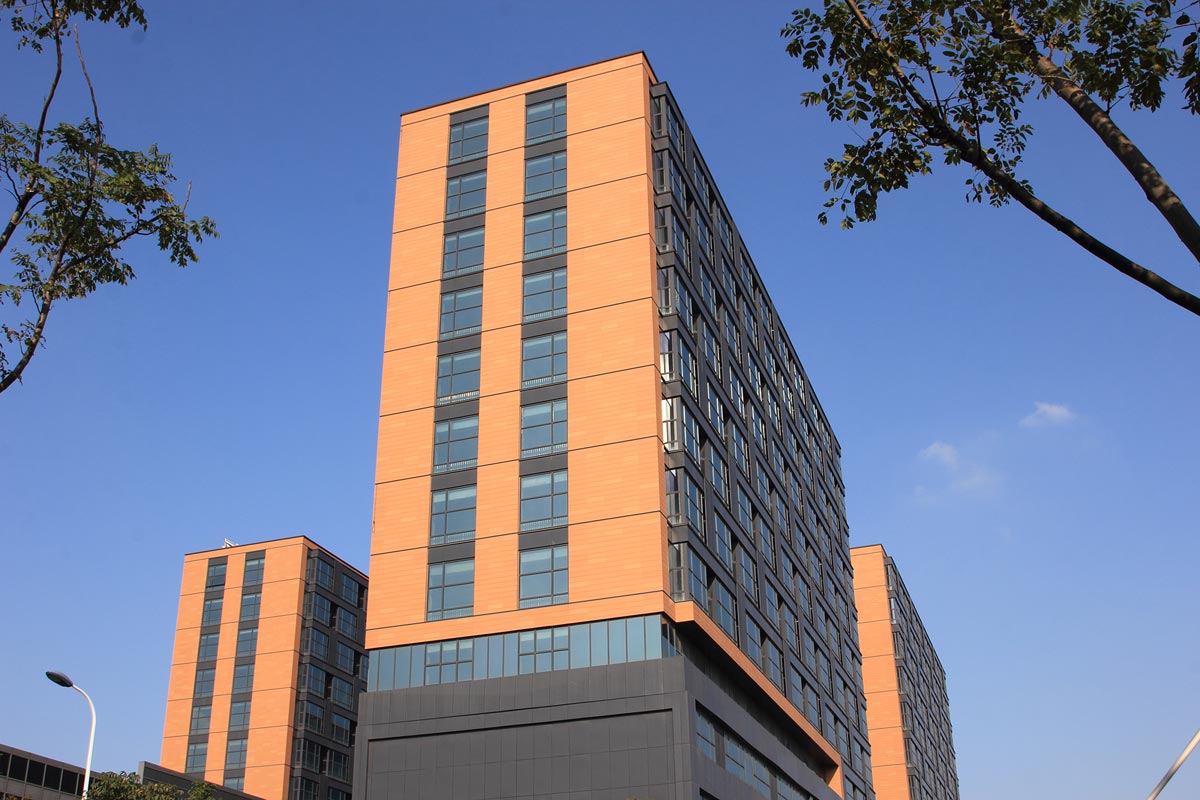
Jintai Plaza is located in Pudong New District, Shanghai. It is adjacent to Jinqiao Town and Jinqiao Export Processing Zone to the west, Yangtze River estuary to the east, Tang Town to the south, Gaodong Town and Waigaoqiao Bonded Zone to the north. Its surrounding area enjoys strong industrial support. The project is an office and commercial complex with comprehensive functions. Positioned as a commercial supporting facility, it aims to serve the surrounding industrial parks. This project attempts to become green sustainable buildings, and the following measures are adopted: garden in the air (roof-top garden), rainwater collection and utilization, light pollution control, adoption of local materials, roof greening, indoor pollution control, energy-saving facade design, to name but a few.
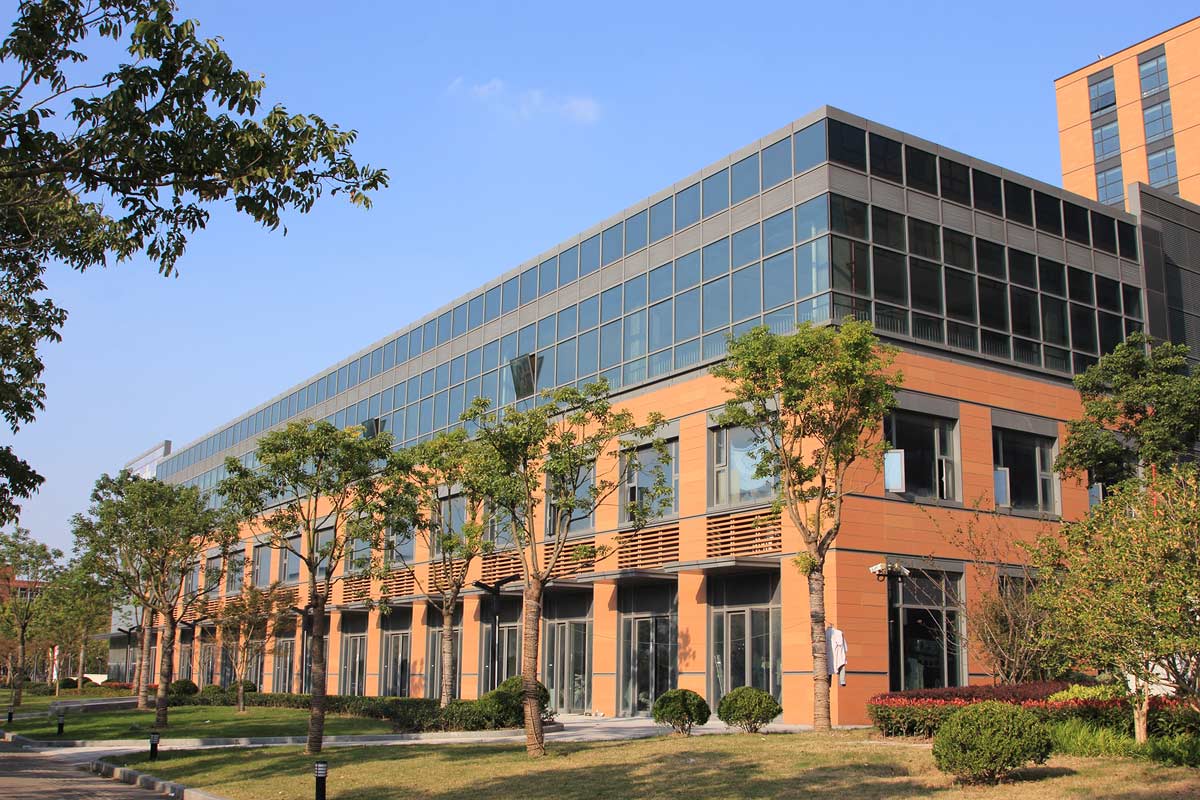
The commercial area of the building adopts the form of inner streets to maximize the commercial space, while creating unique architectural shapes and spaces. The rest of the offices are mostly single-unit building and townhouses with some taking form of a courtyard. Each plot features a self-contained central landscape. The architectural designs of front facade of the internal commercial street and high-rise office buildings demonstrate a strong sense of unity.
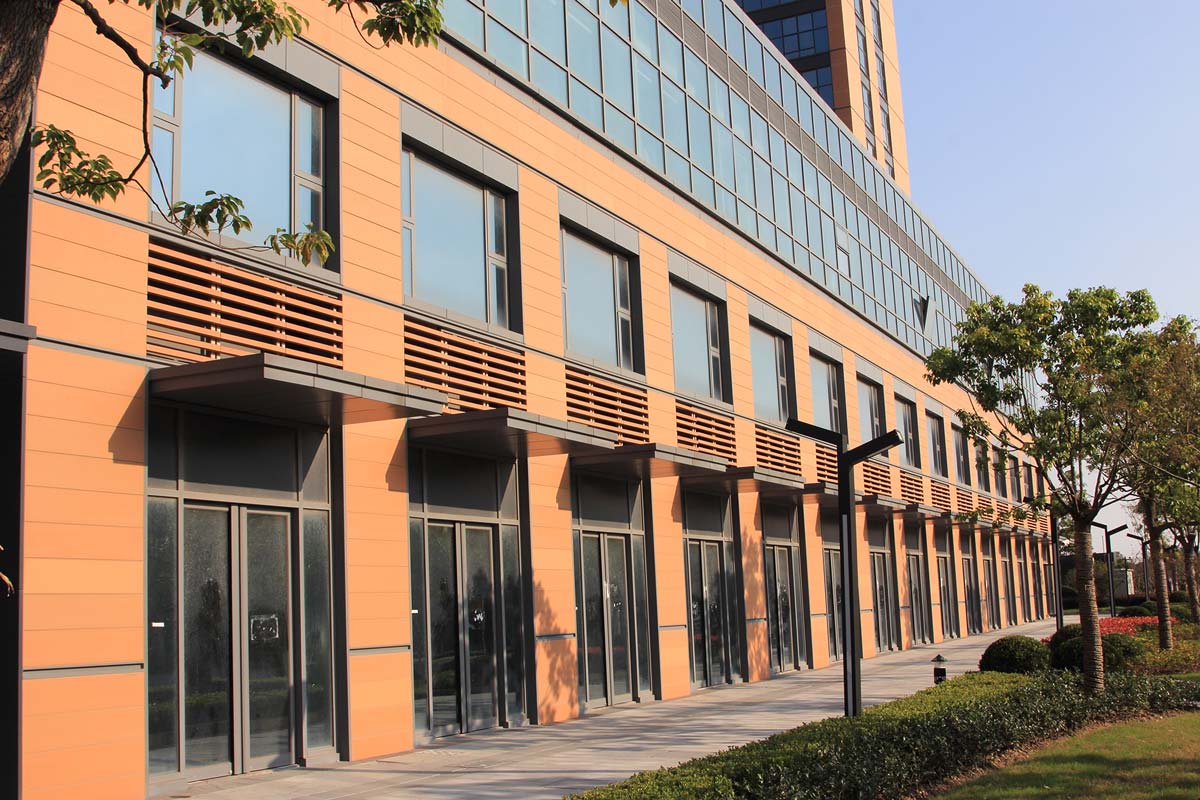
The building facade is designed in a simple and lively manner. Large-scale blue-gray glass curtain walls and mixed color ceramic elements are used as the building facade materials. Among them, the terracotta-panels facade mixes and matches three-colored (orange, yellow and light red) terracotta planes. Each facade plane of mixed color shades gives the architecture sense of layering, breaking away from the boring monochromatic facade. A rich visual experience can be achieved under different light. The custom-made, slender terracotta element allow the architectural lines to be extended in the horizontal direction, creating a chic and sophisticated aura for this modern office and commercial complex.
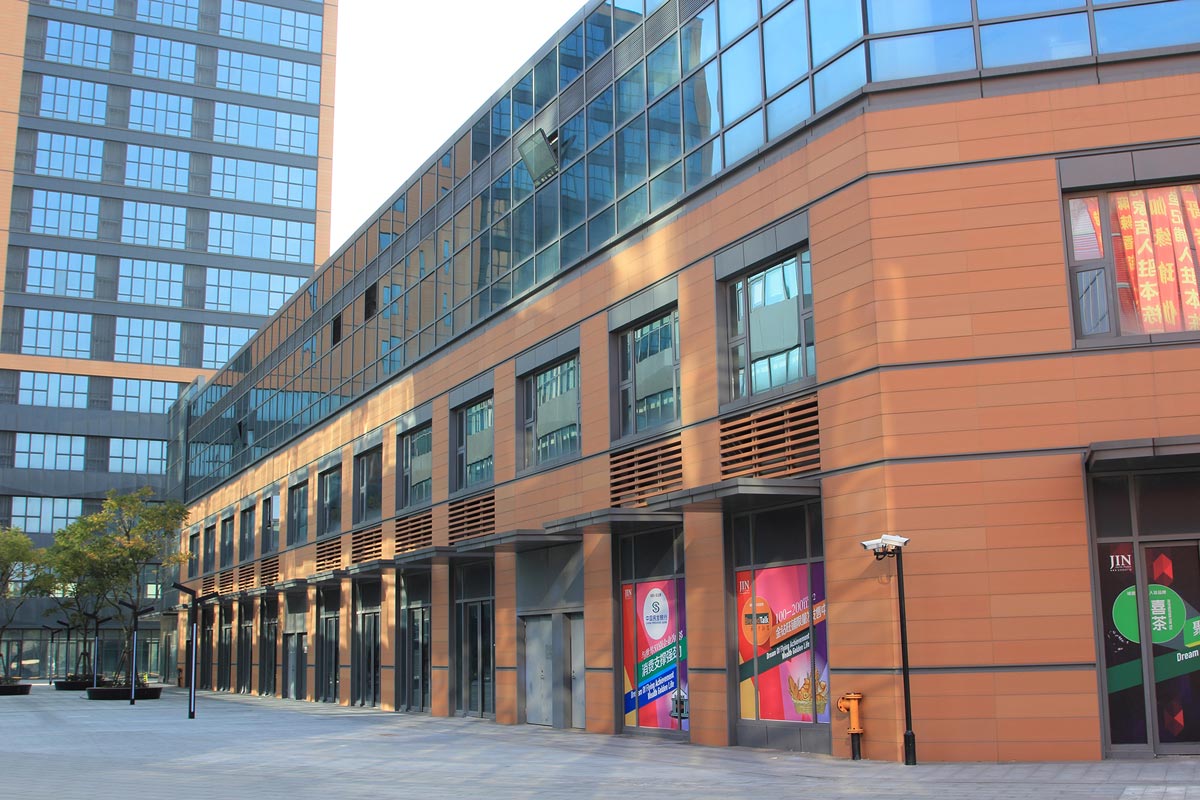
Whether it is using the same tone or mixed-color terracotta for mixing, both has been widely and skillfully used by architects in the color expression of creative architectural concept for building facade decoration. Through the differences in formula and firing temperature, natural terracotta surfaces can cleverly produce the effect of same chromatography with different shades and rich colors. The bond and harmony among the various colors of terracotta products yield a dense and solemn texture. The architects leverage the different brightness levels and infinite color possibilities of glazed terracotta element, so that the magic of light comes to play. As a result, the building injects unique architectural vitality.
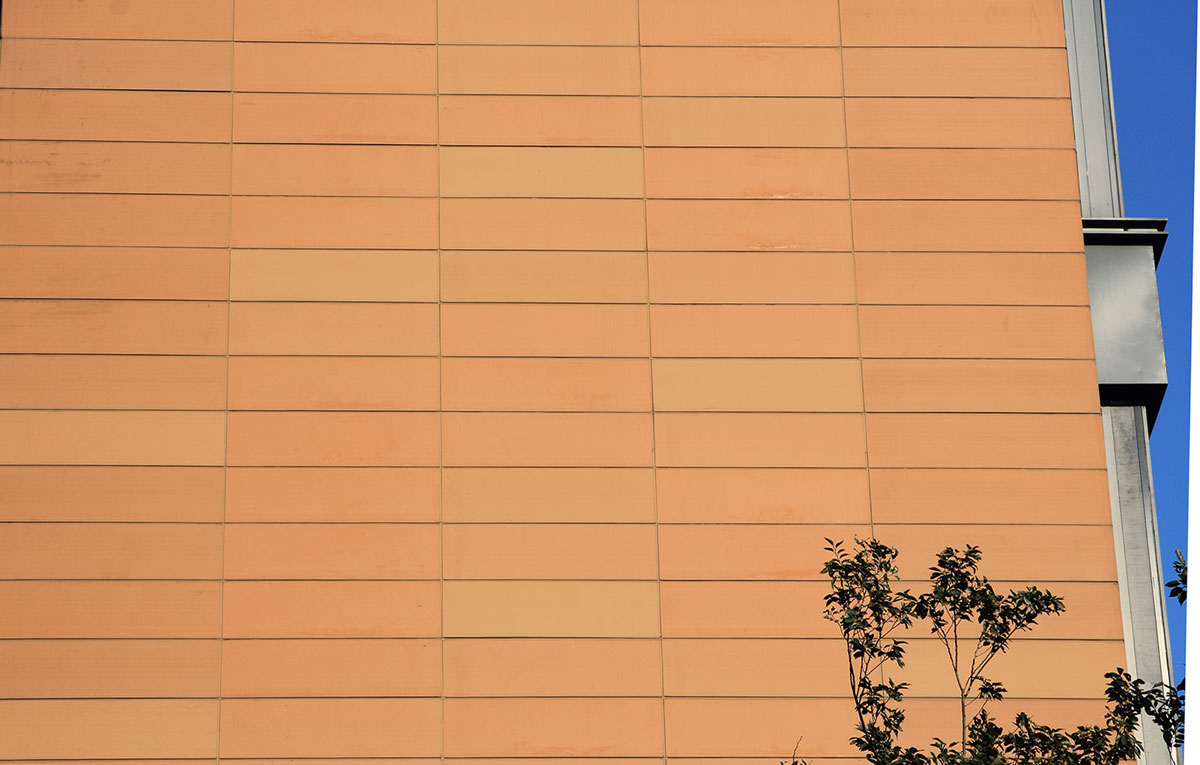
Click here for Jintai Plaza Photo Gallery
All rights reserved. No part of this article may be reproduced or retransmitted in any form without prior permission of www.lopochina.com

